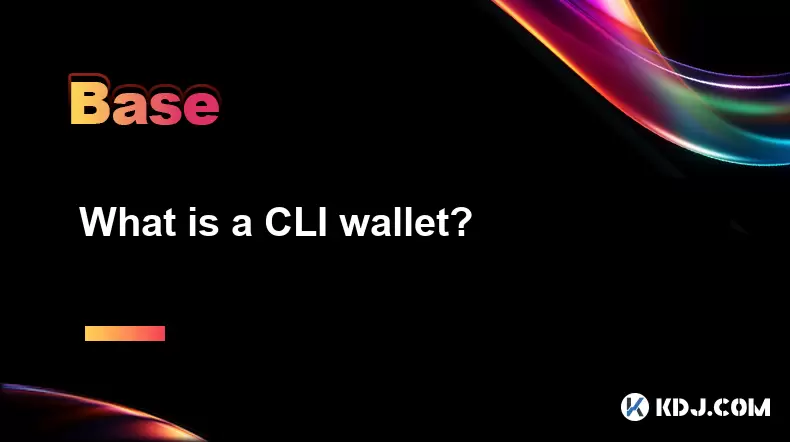-
 Bitcoin
Bitcoin $108,250.0992
0.11% -
 Ethereum
Ethereum $2,515.9404
0.03% -
 Tether USDt
Tether USDt $1.0003
0.00% -
 XRP
XRP $2.2166
-0.19% -
 BNB
BNB $656.5904
0.29% -
 Solana
Solana $147.4122
-0.58% -
 USDC
USDC $1.0000
-0.01% -
 TRON
TRON $0.2830
0.06% -
 Dogecoin
Dogecoin $0.1641
0.27% -
 Cardano
Cardano $0.5739
-0.19% -
 Hyperliquid
Hyperliquid $39.1463
-0.11% -
 Sui
Sui $2.8882
-0.02% -
 Bitcoin Cash
Bitcoin Cash $487.6428
0.31% -
 Chainlink
Chainlink $13.2097
0.07% -
 UNUS SED LEO
UNUS SED LEO $9.0308
0.10% -
 Avalanche
Avalanche $17.8608
0.13% -
 Stellar
Stellar $0.2379
-0.06% -
 Toncoin
Toncoin $2.7400
-0.39% -
 Shiba Inu
Shiba Inu $0.0...01144
-0.36% -
 Litecoin
Litecoin $87.5467
0.66% -
 Hedera
Hedera $0.1538
0.22% -
 Monero
Monero $315.5479
0.36% -
 Dai
Dai $1.0000
0.00% -
 Polkadot
Polkadot $3.3523
-0.71% -
 Ethena USDe
Ethena USDe $1.0003
0.01% -
 Bitget Token
Bitget Token $4.3960
-1.03% -
 Uniswap
Uniswap $7.2663
4.19% -
 Aave
Aave $272.8619
2.04% -
 Pepe
Pepe $0.0...09676
-0.18% -
 Pi
Pi $0.4586
-2.87%
What is a CLI wallet?
A CLI wallet offers advanced users precise control and enhanced security through command-line interactions, ideal for managing crypto assets with scripting and node-level access.
Jul 06, 2025 at 09:21 am

Understanding the Basics of a CLI Wallet
A CLI wallet, short for Command Line Interface wallet, is a type of cryptocurrency wallet that operates through text-based commands rather than graphical interfaces. Unlike desktop or mobile wallets that offer buttons and menus, CLI wallets require users to interact with the blockchain via terminal or command prompt windows.
These wallets are typically favored by advanced users and developers who prefer granular control over their transactions and wallet functions. They allow for more precise operations, scripting capabilities, and direct access to node-level data. Because they often run locally and can interface directly with a full node, CLI wallets are considered among the most secure options for managing crypto assets.
How a CLI Wallet Differs from Other Wallet Types
Compared to GUI (Graphical User Interface) wallets, CLI wallets lack visual elements such as dropdown menus, buttons, and icons. Instead, they rely on typed commands, which can be intimidating for beginners but highly efficient for experienced users.
- User Experience: GUI wallets offer intuitive navigation, while CLI wallets demand familiarity with command syntax.
- Security: Since many CLI wallets connect directly to local nodes, they reduce reliance on third-party servers, enhancing privacy and security.
- Customization: CLI tools often support scripting and automation, enabling advanced transaction batching, monitoring, and integration into development workflows.
This distinction makes CLI wallets particularly valuable in environments where speed, reliability, and control are prioritized over user-friendliness.
Setting Up a CLI Wallet: A Step-by-Step Guide
Setting up a CLI wallet involves several technical steps that must be followed carefully. Below is a detailed walkthrough:
- Download the appropriate wallet software from the official project repository or website.
- Verify the authenticity of the downloaded file using checksums or cryptographic signatures.
- Install the required dependencies based on your operating system (e.g.,
libssl,build-essential). - Extract and place the binary files in an accessible directory.
- Open the terminal or command prompt and navigate to the installation directory.
- Initialize the wallet by running the setup command, such as
bitcoin-wallet create. - Generate a new wallet address using the appropriate command like
getnewaddress "" legacy.
Each step requires careful attention to detail, especially when dealing with cryptographic keys and configuration files.
Key Commands Used in CLI Wallets
Mastering common CLI wallet commands is essential for effective usage. Here are some frequently used ones:
getbalance: Displays the current balance of the wallet.sendtoaddress [address] [amount]: Sends a specified amount of cryptocurrency to a given address.listunspent: Shows unspent transaction outputs (UTXOs) available for spending.backupwallet "[destination]": Creates a backup of the wallet file at the specified path.encryptwallet "[passphrase]": Encrypts the wallet with a user-defined passphrase.
These commands form the foundation of interacting with a CLI wallet and should be understood thoroughly before executing any financial operations.
Securing Your CLI Wallet Effectively
Security is paramount when working with CLI wallets, especially since mistakes can lead to irreversible loss of funds. The following practices are crucial:
- Always store backups in offline, secure locations.
- Use strong encryption passwords and avoid reusing them across platforms.
- Run the wallet on a dedicated machine not exposed to public networks.
- Regularly update the wallet software to patch vulnerabilities.
- Disable unnecessary services and ports on the host system to prevent unauthorized access.
Implementing these safeguards ensures that your CLI wallet remains protected against both external threats and accidental misconfigurations.
Frequently Asked Questions
Q: Can I use a CLI wallet without technical knowledge?
While it's technically possible, it's strongly discouraged. CLI wallets require understanding of command-line operations, basic scripting, and blockchain concepts. Without this background, there's a high risk of errors that could lead to fund loss.
Q: Is a CLI wallet compatible with hardware wallets?
Some CLI wallets support integration with hardware wallets through specific plugins or configurations. However, this functionality depends on the cryptocurrency and the tools available in its ecosystem.
Q: How do I recover my funds if I lose access to the CLI wallet?
Fund recovery relies on having a properly backed-up wallet file or mnemonic seed. If you created a backup using the backupwallet command or noted down recovery phrases, you can restore access by importing the backup into a fresh installation.
Q: Are CLI wallets slower than GUI wallets?
Not necessarily. In fact, CLI wallets often perform faster because they consume fewer system resources and bypass graphical rendering. Their speed largely depends on how well the underlying node is configured and maintained.
Disclaimer:info@kdj.com
The information provided is not trading advice. kdj.com does not assume any responsibility for any investments made based on the information provided in this article. Cryptocurrencies are highly volatile and it is highly recommended that you invest with caution after thorough research!
If you believe that the content used on this website infringes your copyright, please contact us immediately (info@kdj.com) and we will delete it promptly.
- Litecoin Breakout Watch: What Traders Need to Know Now
- 2025-07-06 16:50:13
- Bitcoin, Solana, Ethereum: Decoding the Latest Buzz on the Blockchain
- 2025-07-06 16:50:13
- Widnes Resident's 50p Could Be Your Ticket to Easy Street: Rare Coin Mania!
- 2025-07-06 16:55:13
- Bitcoin, Solaris Presale, and Token Rewards: What's the Buzz?
- 2025-07-06 16:55:13
- Ethereum Under Pressure: Price Drop Amid Global Uncertainties
- 2025-07-06 17:00:13
- XRP, SEC Case, and Prosperity: A New Era for XRP Holders?
- 2025-07-06 17:10:13
Related knowledge

What is a user-generated content (UGC) NFT platform?
Jul 04,2025 at 01:49pm
Understanding the Concept of a UGC NFT PlatformA user-generated content (UGC) NFT platform is a digital marketplace or ecosystem where users can create, mint, and trade non-fungible tokens (NFTs) that represent ownership of original digital content they produce. Unlike traditional NFT platforms where creators often include professional artists or develo...

What is composability in DeFi?
Jul 06,2025 at 04:07pm
Understanding the Concept of Composability in DeFiComposability in DeFi refers to the ability of decentralized finance protocols and smart contracts to interact seamlessly with one another, much like building blocks that can be combined in various ways to create new financial products and services. This concept is a core innovation within the DeFi ecosy...

What is a "crypto primitive"?
Jul 05,2025 at 10:14pm
Defining the Concept of a Crypto PrimitiveIn the context of blockchain and cryptocurrency, a crypto primitive refers to a fundamental building block or foundational element used in constructing decentralized systems and cryptographic protocols. These primitives are essential for enabling secure transactions, consensus mechanisms, and smart contract exec...

What is a fair launch?
Jul 05,2025 at 07:31pm
Understanding the Concept of a Fair LaunchA fair launch refers to the release of a cryptocurrency or blockchain project in a manner that ensures equal opportunity for all participants. Unlike traditional token launches, which may involve private sales, venture capital funding, or pre-mining, a fair launch emphasizes transparency and decentralization. In...

What is a cliff in tokenomics?
Jul 05,2025 at 07:18pm
Understanding the Concept of a Cliff in TokenomicsIn the world of cryptocurrency and blockchain, tokenomics plays a pivotal role in shaping the economic behavior of a digital asset. One of the key mechanisms used to manage token distribution is known as a cliff. This concept is commonly applied in projects that include vesting schedules for tokens, espe...

What is a token generation event (TGE)?
Jul 04,2025 at 07:14am
Understanding the Basics of a Token Generation Event (TGE)A Token Generation Event (TGE) refers to the process through which a blockchain project creates and distributes its native tokens to investors, participants, or stakeholders. This event is often associated with new cryptocurrency projects launching on platforms like Ethereum, Binance Smart Chain,...

What is a user-generated content (UGC) NFT platform?
Jul 04,2025 at 01:49pm
Understanding the Concept of a UGC NFT PlatformA user-generated content (UGC) NFT platform is a digital marketplace or ecosystem where users can create, mint, and trade non-fungible tokens (NFTs) that represent ownership of original digital content they produce. Unlike traditional NFT platforms where creators often include professional artists or develo...

What is composability in DeFi?
Jul 06,2025 at 04:07pm
Understanding the Concept of Composability in DeFiComposability in DeFi refers to the ability of decentralized finance protocols and smart contracts to interact seamlessly with one another, much like building blocks that can be combined in various ways to create new financial products and services. This concept is a core innovation within the DeFi ecosy...

What is a "crypto primitive"?
Jul 05,2025 at 10:14pm
Defining the Concept of a Crypto PrimitiveIn the context of blockchain and cryptocurrency, a crypto primitive refers to a fundamental building block or foundational element used in constructing decentralized systems and cryptographic protocols. These primitives are essential for enabling secure transactions, consensus mechanisms, and smart contract exec...

What is a fair launch?
Jul 05,2025 at 07:31pm
Understanding the Concept of a Fair LaunchA fair launch refers to the release of a cryptocurrency or blockchain project in a manner that ensures equal opportunity for all participants. Unlike traditional token launches, which may involve private sales, venture capital funding, or pre-mining, a fair launch emphasizes transparency and decentralization. In...

What is a cliff in tokenomics?
Jul 05,2025 at 07:18pm
Understanding the Concept of a Cliff in TokenomicsIn the world of cryptocurrency and blockchain, tokenomics plays a pivotal role in shaping the economic behavior of a digital asset. One of the key mechanisms used to manage token distribution is known as a cliff. This concept is commonly applied in projects that include vesting schedules for tokens, espe...

What is a token generation event (TGE)?
Jul 04,2025 at 07:14am
Understanding the Basics of a Token Generation Event (TGE)A Token Generation Event (TGE) refers to the process through which a blockchain project creates and distributes its native tokens to investors, participants, or stakeholders. This event is often associated with new cryptocurrency projects launching on platforms like Ethereum, Binance Smart Chain,...
See all articles

























































































